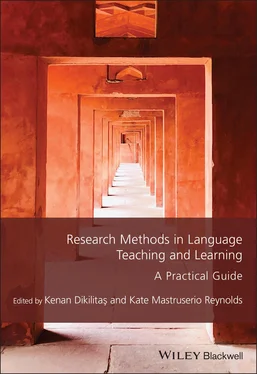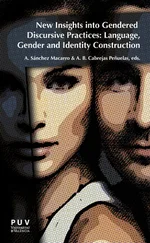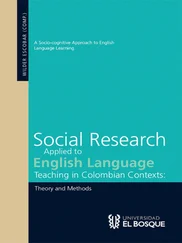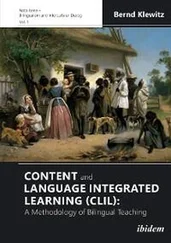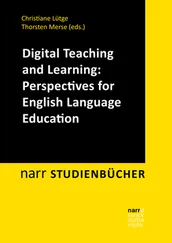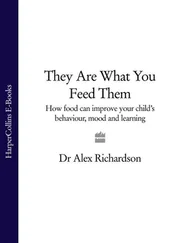Research Methods in Language Teaching and Learning
Здесь есть возможность читать онлайн «Research Methods in Language Teaching and Learning» — ознакомительный отрывок электронной книги совершенно бесплатно, а после прочтения отрывка купить полную версию. В некоторых случаях можно слушать аудио, скачать через торрент в формате fb2 и присутствует краткое содержание. Жанр: unrecognised, на английском языке. Описание произведения, (предисловие) а так же отзывы посетителей доступны на портале библиотеки ЛибКат.
- Название:Research Methods in Language Teaching and Learning
- Автор:
- Жанр:
- Год:неизвестен
- ISBN:нет данных
- Рейтинг книги:5 / 5. Голосов: 1
-
Избранное:Добавить в избранное
- Отзывы:
-
Ваша оценка:
- 100
- 1
- 2
- 3
- 4
- 5
Research Methods in Language Teaching and Learning: краткое содержание, описание и аннотация
Предлагаем к чтению аннотацию, описание, краткое содержание или предисловие (зависит от того, что написал сам автор книги «Research Methods in Language Teaching and Learning»). Если вы не нашли необходимую информацию о книге — напишите в комментариях, мы постараемся отыскать её.
Research Methods in Language Teaching and Learning
Research Methods in Language Teaching and Learning
Research Methods in Language Teaching and Learning — читать онлайн ознакомительный отрывок
Ниже представлен текст книги, разбитый по страницам. Система сохранения места последней прочитанной страницы, позволяет с удобством читать онлайн бесплатно книгу «Research Methods in Language Teaching and Learning», без необходимости каждый раз заново искать на чём Вы остановились. Поставьте закладку, и сможете в любой момент перейти на страницу, на которой закончили чтение.
Интервал:
Закладка:
Interpreting the Diary Data: Dilemmas and Decisions
Like the vast majority of ethnographic diary studies, my research project generated a large amount of data, upon which I then had to attempt to impose some order so as to identify “essential interpretations” of the classroom context and the participant experiences I was investigating (Clayton & Thorne, 2000, p. 156; also see Polit & Hungler, 1993). Yet, as Briggs (2020, p. 190) observes, dealing with qualitative data can be “daunting,” as understanding research participants’ reported perceptions is inherently difficult. Consequently, my data analysis needed to be systematic, and also involved honest reflection about the ways in which I (as the researcher), the research methodology I designed and the analysis I pursued, and the diarists themselves might affect the data (see also Burnard, 1991; Richards et al., 2012).
Decisions About Data Analysis
As the discussion throughout the chapter has shown, the ways in which I conceptualized the data collection process, my decisions underpinning diary design, and the ways in which I communicated with and related to the research participants shaped the resultant data; as Richards et al. (2012, p. 33) note about ethnographic research in general, I was “the primary research instrument” in my project.
My analysis needed to make sense of participants’ “lifeworlds” in order to represent their subjective, insider representations of their classroom and in-class events (see also, Blommaert & Jie, 2010). Consequently, my analysis was necessarily interpretive, as I sought to both “believe” and “doubt” what the data was telling me (Bailey, 1991). This involved identifying the participants’ “truths” through themes and categorizations,which emerged from the data itself, while at the same time acknowledging any difficulties around the diarists’ recruitment and participation, and, consequently, the data they provided – for example, was the study subject to recruitment bias? Did the participants vary in their attitudes to self-disclosure, and did individual diarists’ data differ in length and detail, giving some participants more “voice” in the study than others; if so, how should this data be treated? (Bolger et al., 2003).
Consequently, my analysis needed go beyond the “list-making” activity of solely categorizing data to identify a conceptual framework, which recurrent themes within the data would illuminate (Pavlenko, 2007). In the study, therefore, my framework for interpreting the data was my conceptualization of the classroom as a socially constructed environment (see “Introduction”). Subsequently, although there were a range of ways in which I could approach and analyze the data (ranging from, for example, content analysis to conversational or narrative analysis), I did not start the analysis with a series of pre-determined themes and categorizations in mind that I then attempted to identify. Rather, I pursued a data-led Grounded Theory approach in which patterns and categorizations within the data emerged during the analysis. Such emergent themes included, for example, learners’ deliberate underperformance and the role of silence during class (i.e., some learners were reluctant to answer the teacher’s questions during all-class plenary sessions even though they knew the answers, because they were embarrassed at speaking in public or did not want to be labeled a “know-it-all” by others); apparent inconsistencies in the teacher’s treatment of some learners’ enquiries (i.e., some learners’ difficulties were dealt with in more detail and at much greater length than others, dependent on, as the teacher saw it, the level of detail a particular learner required balanced against the needs, interest, and in-class motivation/boredom of other students); and the ways in which potentially problematic “moments” of interaction were smoothed over by all participants (i.e., all participants seemed to appreciate the need for a balance between developing their full understanding in a language classroom at moments of communicative difficulty and breakdown and the need for lessons to at some point “move on,” even when some had not fully grasped the language being presented, discussed, or practiced). In each case, therefore, the data revealed regular patterns of behavior in lessons that, while clearly affecting language learning opportunities, had its origins in the participants’ understanding of the classroom as a social environment underpinned by shared social norms.
Throughout this process of data interpretation and analysis, I was aware that my interpretation of the diary data might differ from that of another investigator or data analyst – as a researcher, I was inseparable from the findings that emerged. In order to lessen the risk of particularly partial or idiosyncratic interpretations, I therefore engaged in a process of “respondent validation” (Richards et al., 2012) with the project’s diarists, in which I shared and checked my interpretation of the data and, thus, the classroom, with them, and triangulated my understanding of themes within the diary data with those that emerged during my interviews with the participants.
The Diarists and the Data
As with any diary-based research, the participants in my study inevitably responded to the process of maintaining their diary in differing ways, with implications for the subsequent analysis of data. As noted in the previous section, I needed to be aware of recruitment bias during participant selection, taking account of, for example, the ways in which the diarists’ age, gender, class, and cultural background might affect their engagement with the research and with diary-writing. The cohort of learners were relatively homogeneous in terms of age and cultural background (see “Finding Participants” above), and it seems reasonable to assume that, as they had all traveled to the UK to study in a private language school, there was perhaps a degree of similarity in their social or material resource backgrounds. However, over the course of the study, some variation emerged in their attitudes towards the self-narration and self-disclosure that ethnographic diaries require. Typical of similar studies, some were more comfortable with the idea and identity of “being a writer” than others (Elliott, 1997), and thus the diarists differed in what they were willing and able to articulate, and how far they were prepared to do this in the diaries’ written format (Hall, 2008). This had implications for the length and comprehensiveness of data that different diarists contributed to the research, and, consequently, for the extent to which any particular individual’s “voice” emerged during the analysis of the diary data. This was not unexpected, however, and any unevenness in participant voice in the diaries was to a large extent ameliorated by the triangulation of different data sets (e.g., the project’s interviews), these differing modes of expression enabling those reluctant to engage in writing, or who required further prompting in order to report their experience and perceptions, to do so more fully.
Meanwhile, some of the study’s participants recorded their experiences and perspectives as soon as their lessons had finished, some noted them some time later on the same day, and some documented them the following day. Typical of many diary studies, this variation had potential implications for recall and participants’ emotional engagement with what they discussed. Hall (2008), for example, outlines how, following a particularly negative diary entry, a participant clarified in a later commentary that they no longer felt that way about the event described. Although during data analysis, I needed to proceed on the basis that participants told the truth, or what they saw as the truth at the time of writing (ibid.), there was the possibility that the diarists might, whether deliberately or not, have misled, evaded, lied or “put up fronts” (Fine, 1993, p. 271). Overall, therefore, my diary data needed to be treated with a degree of caution or even “suspicion” (ibid.).
Читать дальшеИнтервал:
Закладка:
Похожие книги на «Research Methods in Language Teaching and Learning»
Представляем Вашему вниманию похожие книги на «Research Methods in Language Teaching and Learning» списком для выбора. Мы отобрали схожую по названию и смыслу литературу в надежде предоставить читателям больше вариантов отыскать новые, интересные, ещё непрочитанные произведения.
Обсуждение, отзывы о книге «Research Methods in Language Teaching and Learning» и просто собственные мнения читателей. Оставьте ваши комментарии, напишите, что Вы думаете о произведении, его смысле или главных героях. Укажите что конкретно понравилось, а что нет, и почему Вы так считаете.
